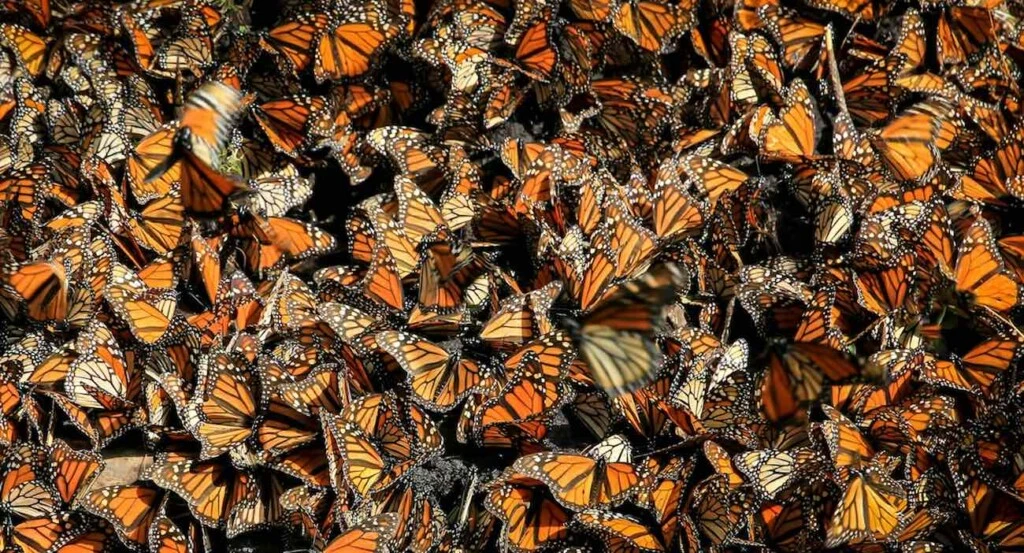Monarch Butterfly Population Nearly Doubles in Mexico
A hopeful update for conservationists: The monarch butterfly population that overwinters in Mexico has nearly doubled this year, according to the World Wildlife Fund (WWF)‘s latest annual census. The survey revealed that, during the winter of 2025, the population of eastern monarchs occupied 4.42 acres of forests in central Mexico, compared to just 2.22 acres last year.
A Positive Trend for the Monarchs
This significant increase marks an important recovery for the species, which has been struggling to regain its numbers after experiencing a sharp decline in recent decades. The census was conducted with help from Mexico’s National Commission of Protected Natural Areas and local communities. This survey is vital as it helps monitor the health of monarch populations, particularly in their critical wintering grounds in Mexico’s forests.
“This year’s increase is encouraging, but it’s crucial that we turn it into a lasting trend,” said Jorge Rickards, director general of WWF Mexico. He emphasized the need for collaborative efforts from governments, landowners, conservationists, and citizens to continue safeguarding the critical habitats along the monarchs’ migratory route in North America.
The Role of Weather and Forest Protection
Experts believe that better weather conditions in 2024 played a key role in the monarchs’ population surge. With less severe drought than in previous years along their migration path from the U.S. and Canada, the butterflies were able to travel more effectively and find sufficient resources.
In addition to improved weather, forest protections in the Monarch Butterfly Biosphere Reserve are showing positive results. A report revealed that forest degradation has improved by 10% from the previous year, with just nine acres of damage between April 2023 and February 2024. This is down from 10 acres the previous year. Degradation causes include illegal logging, natural events, drought, and the removal of trees to control disease.
The Need for Continued Action
Despite the improvements, experts stress the urgency of ongoing conservation efforts. Emma Pelton, the Western Monarch Lead for the Xerces Society, highlighted the need for further habitat restoration and better protection from pesticides. She also pointed out that monarchs were recently proposed for listing as threatened under the Endangered Species Act, and that this protection must be finalized.
Help Monarchs Thrive: Plant Milkweed
While conservation efforts in Mexico are essential, there are ways people in North America can also contribute to the monarch’s recovery. One of the most effective actions is to plant milkweed, the only food source for monarch caterpillars. Milkweed is also the only plant on which monarchs lay their eggs. By planting milkweed, individuals can provide a safe haven for monarchs during their spring migration back north.
Different species of milkweed thrive in different regions, so it’s important to choose the right variety for your area. A milkweed map is available to help guide planting efforts.
The Incredible Monarch Migration
Each year, monarchs embark on an extraordinary journey, migrating nearly 3,000 miles from Canada and the U.S. to the mountain forests of Mexico to overwinter. In spring, they make the return journey, covering another 600 miles north to lay eggs on milkweed plants. Over the course of their migration, several generations are born, each living just a few weeks but continuing the cycle.
Through collective action and continued support for habitat protection, the hope is that the monarchs’ recovery can become a lasting and significant trend.
